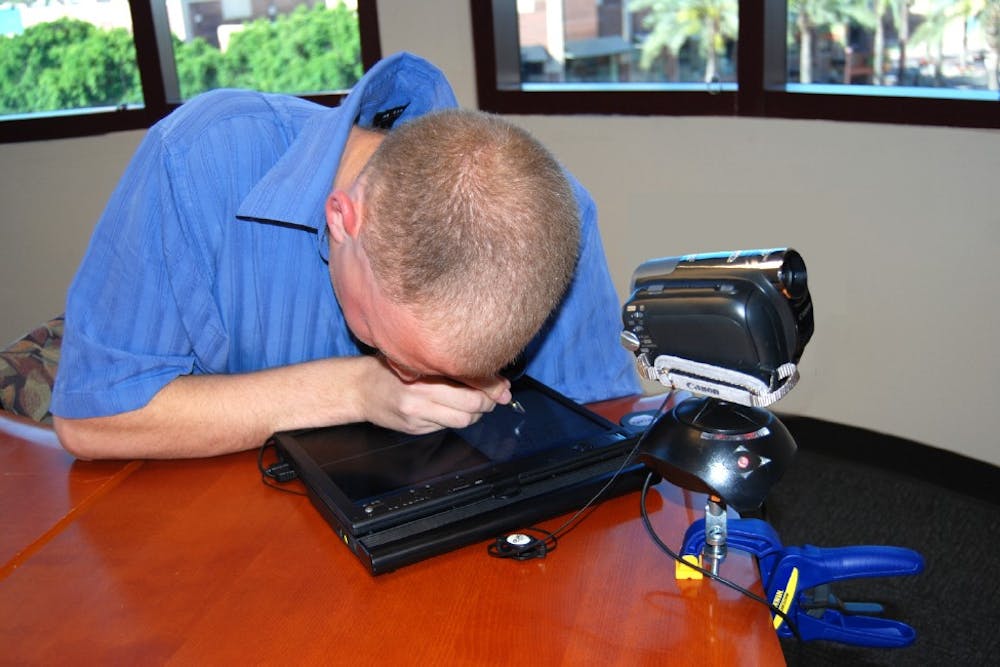A team of ASU students and alumni has developed a device to help low-vision students who have trouble seeing the board in class.
The team developed a device — the Note-Taker — to assist low-vision people with what they said was a delay between the blackboard and a person’s own hand-written notes.
The device is made up of a tablet PC and a camera that can zoom in on a blackboard so a user can see images up close.
The team won $8000 through Microsoft’s Imagine Cup competition last July and plans to re-enter a new model of their device in the 2011 competition in New York.
The Imagine Cup is a technology competition held annually in different locations around the world that allows both high school and college students to compete. Microsoft challenges the competitors to solve real world problems like achieving primary education for everyone, and ending hunger or poverty.
The idea for the Note-Taker came from the experiences of David Hayden, a legally blind ASU graduate and member of the team.
In 2007, Hayden was a math major and had difficulty taking notes in class. He said he would use a monocular to see the board, but had trouble cycling between his notes and finding his place on the board during math classes.
“During the process of note-taking, students rapidly switch between a near-sight task such as viewing and writing notes, and a far-sight task such as viewing a distant board or PowerPoint slide,” said John Black, a member of Team Note-Taker.
Black said that the frequent switching from a near- to a far- sighted task and vice versa causes a delay.
“We call the time spent switching between viewing the board, viewing the notes, and then viewing the board again the Board-Note-Board (BNB) delay,” Black said.
Black said existing technologies like a monocular device, which was used for far-sighted tasks, was not sufficient in assisting with taking notes and that is why the team began working on the Note-Taker.
Black said the development of the Note-Taker allowed Hayden to retake two math classes he previously struggled in and to pass them with A averages.
“Once we developed the prototype, David was able to get his double major,” Black said.
The team’s technology works by having a camera mounted on two adjustable motors that allow it to swivel up and down as well as left and right.
The camera can also focus and zoom in or out if necessary, which allows a person with low vision to view the images on a tablet PC, and write notes with a tablet pen.
It also features other abilities, like if a teacher moves in front of the board blocking notes, a person could simply slide the page a few slides and will be able to see the same notes they were looking at before the teacher blocked them from view.
The team is now working with a third generation model they call the Note-Taker 3.0.
Reach the reporter at brian.bernadel@asu.edu





